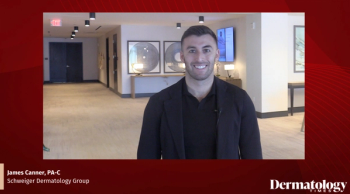
Studies support microneedling efficacy for acne scarring
Studies support using microneedling as monotherapy to treat acne scars; however, mixed evidence requires more direct comparisons with other minimally invasive treatments.
Studies support using microneedling as monotherapy to treat acne scars, according to a systematic review of 33 recent peer-reviewed studies published July 23, 2019 in Dermatologic Surgery.1
But questions remain about how microneedling compares to other acne scarring treatments and which treatments performed in combination with microneedling yield the best results, according to the review.
There is no question that acne scarring is a common and disfiguring problem. Acne vulgaris impacts more than 90% of adolescents and 12% to 14% of adults. Acne scars affect almost 95% of acne vulgaris patients, according to a study2 looking and subcision and microneedling to treat atrophic acne scars in dark skin published August 2019 in the Journal of Clinical and Aesthetic Dermatology.
“Severe scarring caused by acne is associated with substantial physical and psychological distress, particularly in adolescents,” researchers wrote in an article published in Dermatologic Clinics in October 2009.3
Microneedling creates microscopic injuries in the skin’s dermal layer, increasing synthesis of growth cytokines and deposition of collagen and elastin and decreasing inflammatory markers. The changes diminish the appearance of scars, the authors write.
The collective science
Researchers, led by Neelam Vashi, M.D., analyzed microneedling treatment for acne studies since 2009. Results from 33 studies, with a total 1,057 patients, suggested microneedling treatment improved patients’ acne scars; however, results with regard to degree of change were inconsistent, they wrote.
Many different types of scales were used to evaluate the scarring across studies. Because of the lack of uniformity among studies, the authors couldn’t perform a meta-analysis.
Still, they found that patients were by and large satisfied with microneedling treatment for acne scars, and many studies demonstrated high patient satisfaction regardless of whether providers used dermarollers, microneedling fractionated radiofrequency or other microneedling devices, they write.
Some of the studies in the review showed no severe adverse events after microneedling, but several revealed post-microneedling erythema, pain, edema, post-inflammatory hyperpigmentation and lymphadenopathy, according to the review.
In one study of 45 patients, researchers in Pakistan reported that microneedling effectively improves the appearance of acne scars. In the paper published July-September 2019 in the Journal of Ayub Medical College Abbottabad-Pakistan,4 they treated the patients’ scars with four microneedling sessions performed under local anesthesia three weeks apart for two months. Post-treatment 73% of grade 4 scars, based on Goodman and Baron scale, improved by two grades. The remaining grade 4 scars improved to grade 3. Thirty percent of the 20 patients with grade 3 scars improved by one grade, while the others improved by two grades. And all patient with grade 2 scarring improved to grade 1, according to the paper.
However, the collective evidence was mixed when authors of the Dermatologic Surgery review analyzed the literature for studies comparing microneedling monotherapy to dual treatment or to fractional laser treatment. Data are inconclusive, for example, on whether microneedling in combination with platelet-rich plasma (PRP) is more effective than microneedling alone.
Some individual studies are promising for combination therapies. Indian researchers reported on 45 male and female patients with acne scarring who underwent four sessions performed four weeks apart of subcision and microneedling. Subcision releases fibrous tissue to elevate scar tissue.
Three months after the final treatment session, more than 95% of patients improved by at least one grade. Patients experienced “slight” pain, erythema and edema for a day or two post treatment. Patients also thought their acne scars improved. Nearly 18% of patients reported a 75% to 100% improvement in acne scarring; 24.4% reported a 50% to 74% improvement; and 55% perceived a 25% to 49% improvement in their acne scars, according to results of the study published in The Journal of Clinical and Aesthetic Dermatology.2
The researchers concluded that rolling and boxcar scars benefited more from the combination of microneedling and subcision than icepick scars. Patients with Fitzpatrick Skin Types III, IV and V had minimal downtime and tolerated the combination treatment well, with no treatment failures, according to the study.
More research needed
More well-designed randomized controlled trials are needed comparing microneedling with other minimally invasive treatments for acne scarring, according to the review authors.
“In addition, more research is needed in regards to different skin photo types and cost-effectiveness,” they write.
Clinical pearls
Review author Neelam A. Vashi, M.D., associate professor of dermatology, director of the Boston University Center for Ethnic Skin and director of the Cosmetic and Laser Center at Boston University School of Medicine, tells Dermatology Times that she uses microneedling to treat acne scars.
“I use microneedling to help ameliorate the signs of atrophic acne scars,” Dr. Vashi says. “I use this treatment because microscopic injuries to the skin help with collagen production and a reduction in signs and symptoms. There is relatively little downtime with this procedure and it is well-tolerated by all skin types.”
Dr. Vashi recommends that dermatologists and other providers set patients’ expectations from the start.
“Patients should be told that they will have a few days of redness and even mild swelling. They should avoid harsh products and stick to a gentle skin care regimen directly after,” she says.
Disclosures:
Disclosures: Dr. Vashi reports no relevant disclosures.
References:
References:
Mujahid N, Shareef F, Maymone MBC, Vashi NA. Microneedling as a Treatment for Acne Scarring: A Systematic Review. Dermatol Surg. 2019;
Bhargava S, Kumar U, Varma K. Subcision and Microneedling as an Inexpensive and Safe Combination to Treat Atrophic Acne Scars in Dark Skin: A Prospective Study of 45 Patients at a Tertiary Care Center. J Clin Aesthet Dermatol. 2019;12(8):18-22.
Shamban AT, Narurkar VA. Multimodal treatment of acne, acne scars and pigmentation. Dermatol Clin. 2009;27(4):459-71, vi.
Khalid FA, Ahmad S, Mehrose MY, Saleem M, et al. Efficacy of Micro-Needling on Post Acne Scars. J Ayub Med Coll Abbottabad 2019;31(3): 336-339
Newsletter
Like what you’re reading? Subscribe to Dermatology Times for weekly updates on therapies, innovations, and real-world practice tips.



















